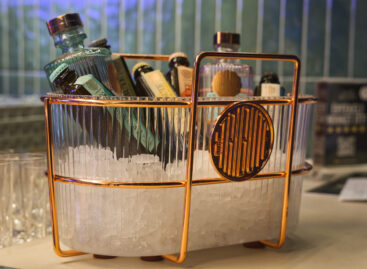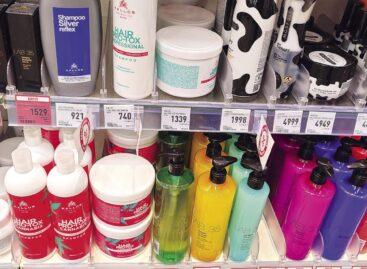… it is juniper berries that rule!
According to IWSR data, premium and premium+ gin sales are in decline on key markets such as the UK and Spain, but the US, France and Japan are performing well. In product innovation brands are drawing inspiration (and marketing support) from local flavours and culture around the world, giving their products a location-specific character.
This article is available for reading in Trade magazin 2025/5.
Slowdown in Hungary too

Attila Piri
marketing director
Heinemann Testvérek
“In 2017 the annual volume of domestic gin consumption was 33,000 9-litre cases, rising to nearly 130,000 cases in 2023. According to NIQ’s retail market report, the gin category was stagnating in the autumn of 2024 – for the first time after a long period. Figures from February 2025 show a 2% contraction compared to the same period last year”,
informs Attila Piri, marketing director at Heinemann.
Heinemann sells Roku gin in the super-premium category, Larios in the premium category and its standard gin is Finsbuy.
“In most European countries we can see a small decrease in gin consumption. However, the Hungarian gin market in is still growing, especially in the premium and premium+ categories. In recent years consumers have shown growing demand for quality drinks and gin remains one of the most popular spirits in the cocktail world”,
explains Dávid Gábor Kovács, Zwack’s marketing director. Kalumba, made using Madagascan spices, is a prominent product among the gins made in Hungary.
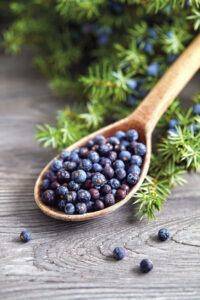
Good, better, best

Gábor Árok
premium spirit manager
Coca-Cola HBC
Magyarország
“NIQ research confirms the assumption that the gin market’s growth seems to be slowing down. Last year the category contracted by 3% in volume, but it grew by 3% in value compared to the previous year. This also reflects the fact that sales of premium and super-premium gins in the higher price range are growing”,
points out Gábor Árok, premium spirit manager of Coca-Cola HBC Magyarország.
In the gin category the company distributes Bombay Sapphire London Dry Gin, in three variants.
Csaba Mosonyi, country manager of Sovereign Brands:

Csaba Mosonyi
country manager
Sovereign Brands
“I don’t see a decline on the Hungarian market, it is more like the dynamic growth of previous years has consolidated and slowed down, with the advancement of other categories such as spritzes and rums”.
Sovereign Brands is introducing the McQueen and the Violet Fog gin to the Hungarian market. It is a premium artisan product made far from the home of gin, near the Brazilian rainforest.
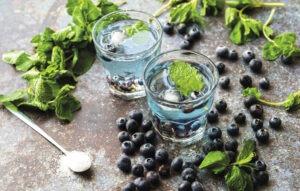
Despite premiumisation – and the rise of sipping-style consumption – gin is still mostly treated as a cocktail substrate, with the rise of flavoured varieties, traditional gins are once again more popular
Juniper berries reign!

Eszter Sgánetz
brand manager
DunaPro Brand
Eszter Sgánetz, brand manager of DunaPro Brand Kft.:
“In 2025 gin consumption in Hungary shows a small decline compared to the significant growth of previous years, similar to other European countries. Classic dry gins still account for the bulk of volume sales, but consumers are thirsty for new things, so many producers are trying flavoured gins. This is why DunaPro has added Portofino Gin to its portfolio, which is based on carefully selected juniper berries, lemon peel, rosemary, lavender and sage distilled in copper stills”.
Dunapro is the distributor of two premium gin brands, Bulldog London Dry Gin and Portofino Dry Gin.

Péter Bárány
owner
Grand Spirit
“With the exception of trends that only last for a year, the whole alcohol category has stalled and this is dragging many categories down. The dynamics of the domestic market are different from the international market, even the gin and tonic trend arrived later”,
says Peter Bárány, the owner of Grand Spirit.
The company’s best-known product is Wheat Blossom gin, famous for its lime and acacia flowers.
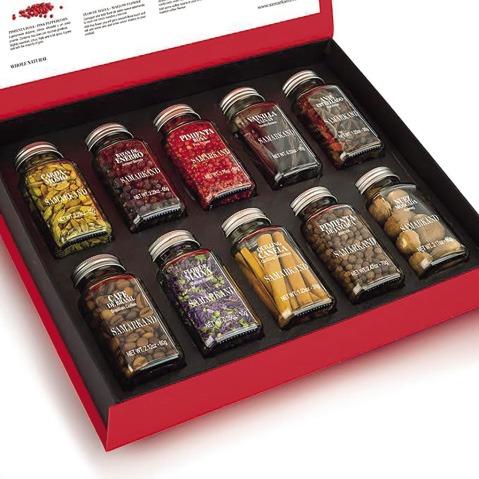
Besides juniper, the basic spices for gin are coriander, angelica, cardamom, cornflower, rose petals, nutmeg flowers, hibiscus, Sichuan pepper, but the wide range of kits also offers many other spices for seasoning your favourite drink at home
New flavours
According to Attila Piri, the number of flavoured gins has increased on the market. Premium gins tend to have a 40% alcohol content or higher. The company’s Roku is 43%, Finsbury Platinum is 47% and is Larios 40%, while flavoured gins are 37.5% – just like lower-priced gins. Domestic gin brands have their place on the market. They typically compete in the super-premium category.

Dávid Gábor Kovács
marketing director
Zwack
Consumers are particularly receptive to fruity flavours (e.g. blackcurrant, citrus) and exotic, spicy notes (e.g. hibiscus, cardamom, vanilla), explains Dávid Gábor Kovács.
Brand loyalty is relatively small as shoppers like to try new flavours and brands. Hungarian-made premium and premium+ gins are gaining ground on the market and represent significant competition to international brands, both in retail and in HoReCa.
Brand loyalty and curiosity
Gábor Árok believes there is brand loyalty in the gin category, but it isn’t as strong as in the whisky segment. In the case of gin consumers are more open to experimentation, be it the popular gin and tonic long drinks or the classic gin-based signature cocktails. With the Bombay Sapphire brand the company focuses on long drinks that can be customised by adding different spices or other ingredients, such as lemon and thyme or even rosemary. Csaba Mosonyi agrees that there is a brand loyalty in the world of domestic gin consumers, but in his view it is more like being loyal to a given flavour. Consumers fall in love with a particular flavour of a brand and then buy it again – it is the good taste experience that grabs consumers. A good example of this is McQueen Ultraviolet Edition or to mention other brands Malfy Rosa or Beefeater Pink Strawberry.
Quality and preference
Eszter Sgánetz’s experience is that brand loyalty is increasingly present on the gin market, especially in the premium category, and she believes that consumers still see gin as a cocktail base. Although gin is still a popular cocktail staple, premium brands and special, distinctive flavours are increasingly helping consumers to choose gin not only for cocktails, but also for sipping on its own. Péter Bárány is of the opinion that the world is constantly changing and new impulses come our way every day, so brand loyalty is becoming less typical. If a few years ago we could talk about consumers who were steadfastly brand loyal, today we are talking about a society that is “sophisticated” and tries to taste and get to know everything. This is basically a good thing, but brand owners have to work much harder to maintain their positions. //
Science comes to the rescue
Researchers at Heriot-Watt University and the University of Edinburgh are using nuclear magnetic resonance (NMR) spectroscopy to determine the unique characteristics and chemical composition of gin, which will make it possible for distillers to create higher quality and more consistent gins and help identify counterfeit products. //

Related news
Premium Gin Hungary introduced the LE Tribute brand at Time Out Market Budapest
🎧 Hallgasd a cikket: Lejátszás Szünet Folytatás Leállítás Nyelv: Auto…
Read more >From hair roots to hair volume
🎧 Hallgasd a cikket: Lejátszás Szünet Folytatás Leállítás Nyelv: Auto…
Read more >Price isn’t enough, promotions and re(in)novation are lifting the plane
🎧 Hallgasd a cikket: Lejátszás Szünet Folytatás Leállítás Nyelv: Auto…
Read more >Related news
Christmas shock in commerce: for the first time, we can pay with bank cards in fewer places
🎧 Hallgasd a cikket: Lejátszás Szünet Folytatás Leállítás Nyelv: Auto…
Read more >Hungarian Confectionery Manufacturers Association: trends in 2025 and prospects for 2026
🎧 Hallgasd a cikket: Lejátszás Szünet Folytatás Leállítás Nyelv: Auto…
Read more >Most grocery chains will be open until noon on December 24th
🎧 Hallgasd a cikket: Lejátszás Szünet Folytatás Leállítás Nyelv: Auto…
Read more >
